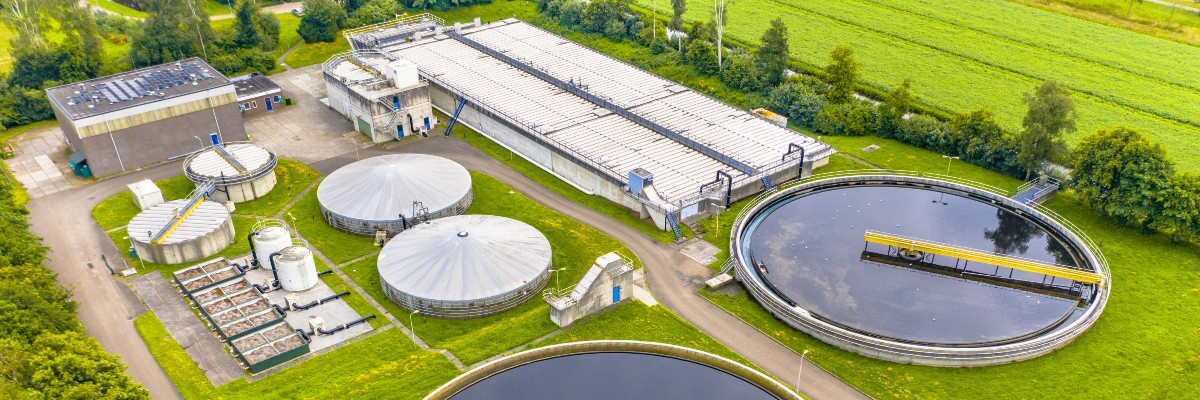Trustworthy Wastewater Options for Sustainable Living and Industry
Recognizing Wastewater Treatment Processes and Their Ecological Impact
The ins and outs of wastewater treatment procedures play a critical function in mitigating environmental obstacles associated with water pollution. Each phase, from preliminary to sophisticated therapies, is developed to attend to particular impurities, inevitably protecting both public health and aquatic ecological communities.
Overview of Wastewater Therapy
Exactly how is wastewater changed into a secure resource for the setting? Wastewater treatment is an essential procedure created to get rid of impurities from made use of water, thereby safeguarding public wellness and safeguarding ecosystems. This procedure starts with the collection of wastewater from residential, commercial, and commercial resources, which is after that routed to treatment facilities.
At these centers, different physical, chemical, and biological methods are utilized to deal with the wastewater. Initial testing removes huge debris, followed by sedimentation to different larger solids. Ultimately, organic treatments, such as activated sludge procedures, utilize microorganisms to break down natural issue. These techniques not just lower toxin degrees however likewise facilitate the recuperation of useful nutrients.
The treated effluent can be safely discharged into natural water bodies or recycled for watering and industrial purposes, advertising resource conservation. In addition, the therapy process generates biosolids, which can be repurposed as fertilizers or soil changes, better boosting sustainability.
Phases of Treatment Processes
The wastewater therapy process normally contains 3 main phases: preliminary, key, and secondary treatment. Each phase serves an unique role in lowering the toxin lots and making sure the effluent fulfills environmental standards prior to discharge.

The main treatment stage concentrates on the physical splitting up of put on hold solids from the wastewater. Via sedimentation, larger bits clear up at the bottom of sedimentation storage tanks, developing sludge, while lighter products, such as oils and oils, float to the surface and are skimmed off. This procedure considerably lowers the natural and inorganic load in the wastewater.
Additional treatment is an organic process intended at further decreasing the focus of natural matter. This phase is necessary for achieving the essential biochemical oxygen need (BOD) reduction, eventually leading to cleaner effluent ready for discharge or further therapy.

Advanced Treatment Technologies
Following the secondary therapy processes, progressed treatment technologies play a crucial function in more boosting the quality of dealt with wastewater. These technologies are designed to get rid of recurring contaminants that are not properly removed throughout primary and additional therapies, making sure the effluent meets rigorous regulative requirements.
Among the widely used sophisticated treatment methods are membrane layer filtration, reverse osmosis, and progressed oxidation processes. Membrane layer purification, consisting of microfiltration and ultrafiltration, works in dividing great fragments, microorganisms, and colloids from the water (Wastewater). Reverse osmosis utilizes semi-permeable membranes to remove dissolved solids, leading to high-quality water ideal for different applications
Advanced oxidation processes (AOPs) employ strong oxidants to break visit the website down natural contaminants, consisting of pharmaceuticals and individual treatment products that are resistant to traditional treatment. These methods enhance the biodegradability of complex compounds, facilitating their removal.
One more substantial modern technology is making use of biological nutrient elimination processes, which especially target nitrogen and phosphorus, stopping eutrophication in getting water bodies. Generally, sophisticated treatment modern technologies are vital for achieving greater degrees of purification, advertising water reuse, and protecting public health while addressing the challenges related to wastewater administration.
Environmental Advantages of Treatment
Various ecological benefits emerge from effective wastewater treatment procedures that add to ecosystem health and sustainability. Mostly, these processes substantially minimize the release of unsafe toxins into natural water bodies, which helps keep aquatic ecosystems. By getting rid of pollutants such as heavy metals, nutrients, and pathogens, dealt with wastewater mitigates the threat of waterborne illness useful source and advertises biodiversity in marine atmospheres.
In addition, wastewater treatment centers usually utilize innovative innovations that enable water recycling and reuse. This practice not only preserves freshwater resources but also minimizes the need on natural water materials. Boosted nutrient elimination from wastewater can also avoid eutrophication, a process that brings about algal flowers and succeeding oxygen depletion in aquatic systems.
In addition, efficient treatment processes can minimize greenhouse gas exhausts, particularly methane and laughing gas, which are typically released throughout untreated wastewater decay. By recording and using biogas from anaerobic digesters, facilities can transform waste into renewable resource, thereby adding to a reduction in nonrenewable fuel source dependency.
Obstacles and Future Trends
While the ecological advantages of wastewater therapy are clear, several obstacles continue that impede optimal outcomes in this area. One significant problem is aging infrastructure, which usually leads to inefficiencies and raised operational costs - Wastewater. Several treatment plants were designed decades back, and their capabilities do not line up with modern-day needs, which include stricter governing requirements and higher volumes of wastewater as a result of urbanization
Looking in advance, there is a growing emphasis on resource recuperation and round economic climate principles within wastewater therapy. Advancements such as anaerobic food digestion, which can generate biogas, and advanced filtration modern technologies are obtaining grip. These techniques not just boost treatment efficiency yet additionally promote sustainability.
Inevitably, dealing with these challenges needs cooperation among stakeholders, investment in modern technology, and a read the full info here commitment to ongoing research study. By accepting these patterns, the wastewater treatment sector can develop to meet the needs of a changing environment and society.
Conclusion
In final thought, wastewater treatment procedures play an important duty in boosting ecological quality and public health and wellness. The multi-stage therapy structure, combined with innovative technologies, properly alleviates pollution and promotes lasting water management. By resolving residual pollutants and lessening nutrition runoff, these processes add to the preservation of water communities and the decrease of greenhouse gas exhausts. Proceeded developments and adaptations in therapy approaches will be vital for getting over emerging difficulties and guaranteeing the sustainability of natural sources (Wastewater).